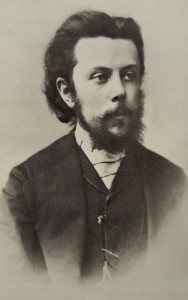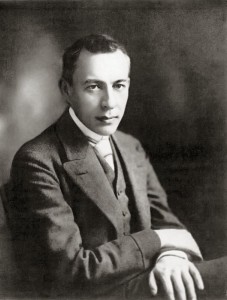Winter Concert
Scenarios Medieval
Fort Worth Civic Orchestra
Kurt Sprenger, Music Director
Seon-young Im, Piano Soloist*
Pianist Dr. SeonYoung Im has enjoyed a successful career, both as a pedagogue and a professional performer. Born in Anyang, South Korea, she began her musical studies at the age of four. Upon graduation from the Sun Hwa Arts School, she earned her Bachelor Degree from Yonsei University with an emphasis on piano performance and her Master and Doctoral degrees from the University of Texas at Austin.
Dr. Im won First Prize in the Mozart Concerto Competition and was a finalist at the National Suri Competition, both in South Korea. She performed Beethoven’s Piano Concerto No. 1 with the Korean Philharmonic Orchestra and has also appeared as a soloist at the Kostomucksha International Music Academia in Russia, the Eumyoun Music Festival and Music Alp in Courchevel, France. Dr. Im taught at the School of Music at the Ecclesia College in Springdale (Arkansas) and at the Northwest Arkansas Community College in Bentonville, where she was responsible for applied piano, music appreciation, music theory and piano instruction.
Daniel Salls, Guest Conductor*
Saturday, March 4 at 7:30 p.m.
Truett Auditorium
Southwestern Baptist Theological Seminary
2001 West Seminary Drive, Fort Worth, TX
Sunday, March 5 at 6:00 p.m.
Birchman Baptist Church
9100 North Normandale Street, Fort Worth, TX
Admission Free
Concert Program

Modest Mussorgsky (1839-1881)
Night on Bald Mountain (arr. Rimsky-Korsakov)
There may have been as many as half a dozen versions of the popular “Night on Bald Mountain.” Mussorgsky originally conceived it for a pair of unrealized operas, “St. John’s Eve” (1858) after the short story by Gogol and “The Witch” (1860) after a play by the composer’s friend, Gyorgy von Mengden. A tantalizing note in Rimsky-Korsakov’s memoirs describes the “Bald Mountain” music in a work Mussorgsky wrote for piano and orchestra in the early 1860s, but the score is long lost. The earliest version we have is his 1867 tone poem, originally titled “St. John’s Eve on the Bald Mountain.” When Balakirev refused to perform it, Mussorgsky recycled it as a choral scene for a pair of unrealized opera projects, “Mlada” (1872) that was to have been a collaborative project by the Russian Five composers and “Sorochinsky Fair” (1880), but no version of it was ever produced or performed in his lifetime.
In 1886, Rimsky-Korsakov reworked Mussorgsky’s musical materials posthumously into the popular work we know today as “Night on Bald Mountain.” It was further revised by Stokowski for Disney’s “Fantasia” in 1940. Having struggled with it for years, Rimsky made numerous “corrections” or modifications to his friend’s original melodies and harmonies from devil’s sabbath scene in Sorochinsky Fair.” He described his work on the score:
- “Mussorgsky conceived the queer and incoherent idea of making the peasant lad, without rhyme or reason, see the sabbath of devilry in a dream, which was to form a sort of stage intermezzo that did not chime at all with the rest of the scenario… the piece ended with the ringing of the village church bell, at the sounds of which the frightened evil spirits vanished. Tranquility and dawn were built on the theme of the peasant lad… I made use of its last version for the purpose of closing the composition.”

Sergei Rachmaninoff (1873-1943)
Piano Concerto No. 2 in C minor, Op. 18*
In popular culture, its musical themes have become symbols for love, loneliness and longing (“All By Myself” and “Full Moon and Empty Arms”). But the music itself may easily have been a composer’s eloquent expression about the power of friendship and compassion to overcome personal despair.
Young Rachmaninoff – Seryoshka to his friends – was a stellar talent clearly destined for great things. In his teens, he’d already written one gorgeous piano concerto; the one-act opera “Aleko”; and his Prelude in C-sharp minor, the iconic anthem of gloom that dogged him all his life. But the 1897 premiere of his First Symphony – poorly prepared, poorly conducted (by Glazunov), poorly performed and poorly reviewed – was a spirit-killing defeat. It took the intervention of his internist, an amateur violist named Nikolai Dahl, to buoy his confidence with a course of daily hypnotherapy, and by the spring of 1900, Rachmaninoff was ready to compose again.
In May that year, a fully recovered Seryoshka traveled to the Black Sea resort of Yalta with his friend, the operatic bass Fyodor Chaliapin. There, they found composer Vassily Kalinnikov and his wife living in shocking conditions of poverty. Consumptive and near death, the composer had been unable to sell or publish his own music, so Rachmaninoff called on his own publisher and dictated the financial terms that brightened the final year of Kalinnikov’s life. “Thank God [my] symphonies will be brought into the world,” wrote a grateful Kalinnikov. “Rachmaninoff came at the right moment.”
Just a few weeks later, Rachmaninoff and Chaliapin were in Italy, having rented a small house in Genoa where they could enjoy the warmth of the Mediterranean summer. During their stay, the singer worked on his new role as Boito’s Mefistofeles while the composer jotted down his initial sketches for this concerto and his Suite No. 2 for two pianos.

Donald O. Johnston (b. 1929)
Symphony No. 3 (Scenarios Medieval)
Premiere Performance
Edited from a program note by the composer:
The Symphony No. 3 was not “programmatic” as originally conceived. Its title, “Scenarios Medieval,” was added after some listeners, upon hearing Howard Hanson’s private reading with the Rochester Philharmonic, conjectured about the images that came to mind.
The first movement was composed in the conventional first movement form: an exposition of thematic materials, a development section with thematic variations and a recapitulation of the opening materials. Its title, “Grand Entrance,” might suggest to the more imaginative listener a scene of royal personages preparing to join a great gathering or festival.
The introspective second movement, “Daybreak, Pastoral Scene at Dawn,” could evoke the picture of a rising sun on a glorious day, Knights of the Realm preparing their mounts early in the day, mingling in the courtyard and readying for the day’s quests. Such a picture is interesting but was not a part of the composing process. The music came first; the evocation is definitely incidental.
“Rustic Dance,” actually a boisterous double fugue, is a most suitable title for the third and final movement as it bounces merrily along. The composer was only concerned with the problems of contrapuntal development and balance in fugue form – that the composition had balance and direction. The suggestive title was added later.

